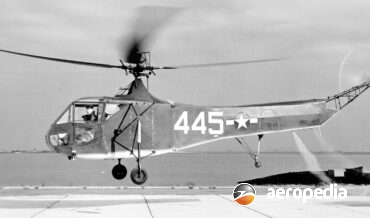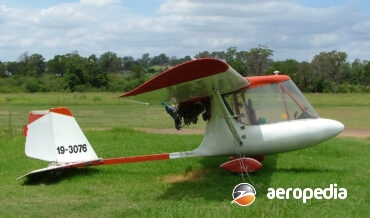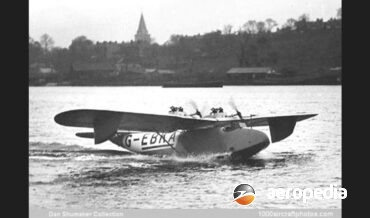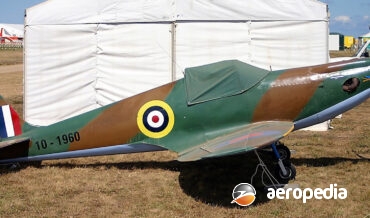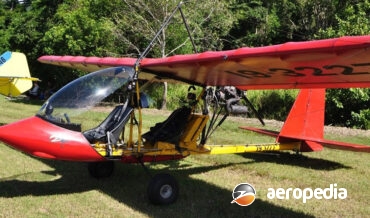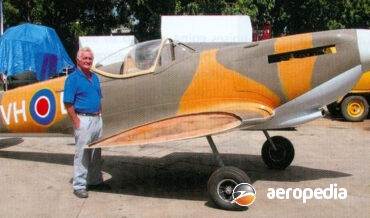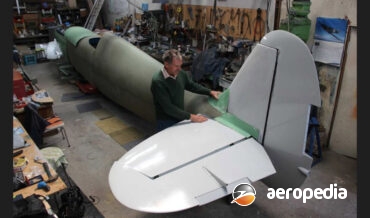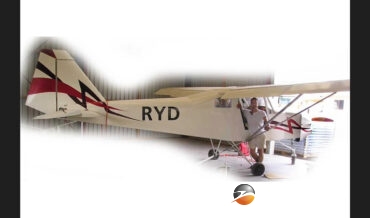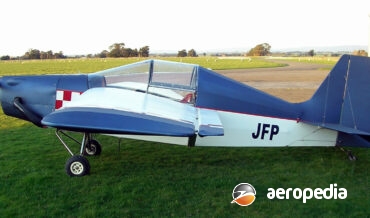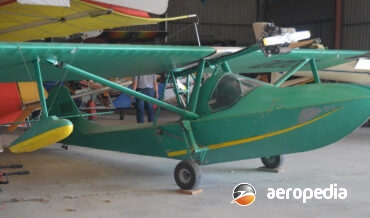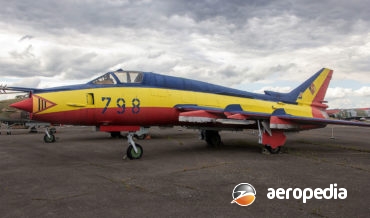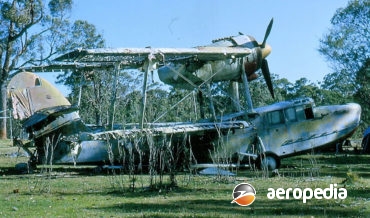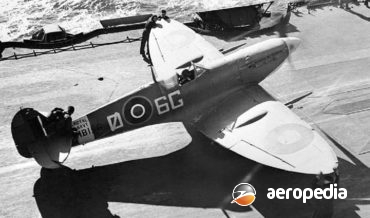All Contents
Contents
Photograph: Aerospatiale SA-341 Gazelle VH-GKK (c/n 1527) at Bankstown, NSW (David C Eyre) Country of origin: United States of America. Description: Multi-role battlefield transport support helicopter. Power Plant: Two 1487kw (1,994 shp) General Electric T700-GE -701D turboshafts. Specifications: Length: 19.76 m (64 ft 10 in) Fuselage length: 15.27 m (50
David C. Eyre
- October 4, 2023
The Startech ST-1 was one of a few designs by Anthony Shennan, an Australian, who designed the BeachBoy Staggerwing, Beach Boy ultralight, and light sport aircraft.
David C. Eyre
- June 26, 2020
In 1930 Lawrence Schaeffer of Loxton, SA commenced construction of a two-seat parasol wing monoplane to be fitted with a converted Dodge four-cylinder motor car engine.
David C. Eyre
- May 25, 2020
This was a one-off ultra-light amphibian built it is believed in Queensland, the prototype was completed becoming 19-4649 (c/n 3) and it was registered on 12 April 2006.
David C. Eyre
- May 25, 2020
The ASW-20 was designed by Gerhard Walbel and built by Alexander Schleicher GmbH & Co in Germany, Some 765 were built by the Company in Germany and a further 140 were completed in France by Centrair.
David C. Eyre
- May 25, 2020
This was a light two-seat training aircraft with side-by-side seating designed and built by Nestor Slepcev at his production facility at Beechwood, NSW.
David C. Eyre
- May 25, 2020
Sydney Nelson Staff at Harris Park, near Parramatta, NSW, built an aircraft of his own design, the machine being complete by 18 July 1910.
David C. Eyre
- May 25, 2020
The Husky was a one-off ultra-light aircraft and was a 75 percent basic scale representation of the Piper Cub. It was registered with the RAA as 10-1377 (c/n 9202) from 16 December 1992 to 5 March 2002.
David C. Eyre
- May 25, 2020
The Sportair was a single-seat kit-built ultralight fitted with a 37-kw (50-hp) Rotax 503 engine. It had a cruising speed of 139 km/h (86 mph) and a stalling speed of 56 km/h (35 mph).
David C. Eyre
- May 25, 2020
The Junior was designed and built by ex-South African Francois van Teijlingen who for many years had an interest in helicopters and gyrocopters, building three Bensen Gyrocopters and owning a Scorpion and a Brantly B-2 for a period.
David C. Eyre
- May 25, 2020
The Swift was a single-seat light sporting monoplane developed and marketed in the 1960s in Australia and saw some success. It was powered by a Cuyuna engine which produced 22-kw (30-hp).
David C. Eyre
- May 25, 2020
The HNS-1 was first flown in 1942. In March 1947 the US Coast Guard icebreaker USS Northwind visited Wellington, NZ on its return from the Antarctic where it formed part of the 1946-47 expedition code named Operation Highjump of Admiral Byrd.
David C. Eyre
- May 25, 2020
The Sundowner was one of a series of aircraft produced by Sport Aircraft for the ultra-light market.
David C. Eyre
- May 25, 2020
The Shuttle two-seat three axis strut-braced high wing with flaperons ultralight aircraft with an enclosed cabin was produced for some years in the early 1990s and is similar in appearance to the Cadet Boorabee.
David C. Eyre
- May 25, 2020
Mr W Lance Sporer lived on a farm at Glencoe near Mt Gambier in the 1930s and developed some interest in engineering, taking a correspondence course. He became involved in the reconstruction at Mt Gambier of a de Havilland DH.60 Moth which crashed near Jerilderie.
David C. Eyre
- May 25, 2020
The Short S.1 Cockle was a small flying-boat designed and built by Short Brothers in 1924, it being designed for and ordered by Lebbeus Hordern of Sydney as a replacement for the Short Shrimp then in service.
David C. Eyre
- May 25, 2020
The Spitfire SW-1 registered with the RAA as 10-1960 (c/n SPT-01) is a scale replica of the Supermarine Spitfire and is a one-off aircraft designed and built in Australia by the owner.
David C. Eyre
- May 25, 2020
Darcy Shipman lived in Glenreagh, NSW and built a light aircraft similar in appearance to a de Havilland DH-53, being a low-wing monoplane fitted with a modified Henderson motor-cycle engine.
David C. Eyre
- May 25, 2020
This was an ultralight aircraft similar in appearance to a Thruster 500 and became 19-3227 (c/n 891662) and, fitted with a Rotax 582 engine, was registered under RAA regulations in Queensland on 10 September 1999.
David C. Eyre
- May 25, 2020
This was an ultra-light aircraft which was allotted the registration 19-1309 (c/n 2) by the RAA and appeared on the register from 17 October 1991 to 3 December 2008.
David C. Eyre
- May 25, 2020
The Pegasus was an Australian designed ultra-light for the local market. It was powered by a 34-kw (45-hp) Fuji Robin engine.
David C. Eyre
- May 25, 2020
The Drifter is one of a series of ultra-light aircraft produced by Seabird Aviation of Hervey Bay Queensland. A small production batch was built, and a couple survive, including 25-0256 (c/n DR90-0401) and 25-0319 (c/n DR89-0375).
David C. Eyre
- May 25, 2020
Very little is known of this aircraft. It was a single-engine high-wing strut-braced monoplane with its tail on a boom and the engine mounted on the framework and a tricycle undercarriage.
David C. Eyre
- May 25, 2020
The ASW-29 is one of a series of self-launched gliders produced in West Germany and it was produced in a number of variants.
David C. Eyre
- May 25, 2020
Nestor Slepcev, who migrated to Australia from Yugoslavia, is known for his design and development of the Storch series, which has sold in some numbers around the World.
David C. Eyre
- May 25, 2020
In February 1913 a building contractor from Hay, NSW, Mr V B Sylvander, commenced construction of a Chanute type biplane glider which was towed into the air by a motor vehicle and a successful flight was made on 18 May 1913.
David C. Eyre
- May 25, 2020
This was a single-seat ultralight aircraft built by Mr R Sweetapple with an enclosed cockpit which was registered with the RAA as 10-483 (c/n 1) on 20 July 1988.
David C. Eyre
- May 25, 2020
The Spitfire Mk IV Replica is an 80 percent replica of the World War II Supermarine Spitfire, designed and initially produced by Brian Foxley-Conolly in Queensland, who had previously designed and commenced production of the Foxcon Terrier series of light aircraft.
David C. Eyre
- May 25, 2020
In March 2018 it was announced Mr Rodney McNeill, a Vietnam veteran, was building a full-scale replica of a Spitfire Mk I.
David C. Eyre
- May 25, 2020
This aircraft was designed as a one-off by Rino Stoof of Cambridge, NZ in the late 1990s and was almost completed and is known to have got to the stage of engine runs.
David C. Eyre
- May 25, 2020
The Stiletto was a high-performance single-seat ultralight with a pusher engine and of canard configuration. Little is known about its development and production.
David C. Eyre
- May 25, 2020
Rodney Stiff, the founder of the very successful Jabiru company at Bundaberg in Queensland which produces the Jabiru Aircraft for the world’s recreational aviation market, has a background in mechanical engineering and was involved in the design and construction of equipment for cane harvesting for many years.
David C. Eyre
- May 25, 2020
The Stuker is a one-off design by Mr Stewart Kerr in New Zealand and is similar in appearance to a Rans S-9. It was built by Mr Kerr and registered ZK-JFP (c/n 001) to him on 13 May 1997.
David C. Eyre
- May 25, 2020
The MK 2 was an amphibious ultralight designed in Australia by John P Stevens for the local market and is one of a series of aircraft Mr Stephens has produced over the years, all for the ultralight market and most to be operated as amphibians.
David C. Eyre
- May 25, 2020
Little is known about this ultralight aircraft but one example is known to have been involved in an incident 14 km south-west of Jondaryan, Qld on 16 October 1985.
David C. Eyre
- May 25, 2020
The LAK 17 series is a single-seat glider designed by members of the Lithuanian Aero Club to meet JAR-22
Utility category regulations.
David C. Eyre
- March 23, 2020
The Slepcev Me 109G-2 was a 75% per cent scale replica of the Luftwaffe Messerschmitt Bf 109G-2 fighter aircraft of World War II.
David C. Eyre
- March 23, 2020
The Su-22 was a development of the Su-17, and before that the Su-7, attack aircraft developed for the Russian Air force and was built in large numbers, seeing service throughout the eastern block, and with Middle East air forces, including Libya, Iraq, and Yemen, as well as with Peru in
David C. Eyre
- May 19, 2019
The Sea Otter was the last biplane produced by Supermarine and was designed to meet specification S7/38 to replace the Supermarine Walrus in RAF service.
David C. Eyre
- May 19, 2019
In 1941, following the success of the Sea Hurricane, it was decided to build a variant of the Spitfire for operations from British aircraft carriers, and a Mk VB was converted and performed compatibility trials on board HMS Illustrious.
David C. Eyre
- May 19, 2019
Recent Comments
Archives
Categories
- No categories
Categories
- No categories
Latest Posts
Newsletter




